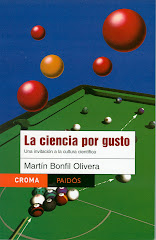by Martín Bonfil Olivera
Published in Milenio Diario, November 12, 2008
 Just what we habitants of Mexico City needed. Only two days after a plane crashed right in the middle of Mexico city's Polanco zone (an important suburb in México city), killing its crew and 40 other people that were in the wrong place at the wrong time, a new incident occurs in the same zone, causing alarm: a leak of ethylmercaptane that forced the evacuation of at least two thousand people. The fear was understandable, because although ethylmercaptane is harmless in low concentrations, is has a strong "gas" odor.
Just what we habitants of Mexico City needed. Only two days after a plane crashed right in the middle of Mexico city's Polanco zone (an important suburb in México city), killing its crew and 40 other people that were in the wrong place at the wrong time, a new incident occurs in the same zone, causing alarm: a leak of ethylmercaptane that forced the evacuation of at least two thousand people. The fear was understandable, because although ethylmercaptane is harmless in low concentrations, is has a strong "gas" odor.
In reality, gas does not smell: the smell in gas is due precisely to ethylmercaptane. The reason why we associate mercaptane smell to gas leaks goes back to a tragedy that happened in 1937 in
In march of that year the
Mercaptanes or thiols are chemical compounds very similar to alcohols, but instead of oxygen, they have sulfur. The name comes from the Latin term mercurium captans, "that captures mercury", because such metal combines very easily with these molecules. Ethylmercaptane or ethanethiol, which is the one normally used make gas smelly, is relatively inoffensive in low concentrations, although in high doses it can be toxic. The smell in Polanco was due to a tank filled with the substance that someone left opened and abandoned in a terrain owned by a glass factory.
There was no risk involved, but there was fear. The doubt remains whether this was, as is heavily insisted with respect to the death of mexican state minister Juan Camilo Mouriño and ex-antidrug zar José Luis Santiago Vasconcelos, just another "accident."
(translated by Adrián Robles Benavides)
To receive Science for pleasure weekly
in your email, subscribe here!





No comments:
Post a Comment